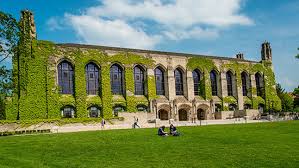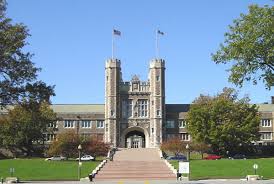In the 21st century, the concept of traditional schooling is being increasingly challenged.
The notion that education must take place within the rigid framework of a formal school system is becoming outdated. It’s time to abolish schools and reimagine how we can better prepare young people for the complex, ever-evolving world they will inherit.
In this article, we’ll explore the origins of modern schooling, the reasons why the current model no longer serves today’s needs, and innovative alternatives that promise to revolutionize education.
The Origins of Modern Schooling
The modern school system that most people are familiar with is a relatively recent invention.
Historically, education was far more flexible and diverse, varying according to local customs, traditions, and needs. The formal school system, as we know it today, largely took shape during the Industrial Age.
At that time, schools were designed to prepare students for factory work: rigid schedules, rote memorization, and obedience to authority were emphasized. But society has dramatically evolved since then, and so too should our approach to education.
The Industrial Age and Education
The Industrial Revolution brought with it the rise of factories and mass production, which in turn influenced the way schooling was structured.
Schools became environments where students were trained to follow instructions, sit still for extended periods, and work within strict routines.
These methods were effective for producing workers suited to industrial jobs but fell short in fostering creativity, critical thinking, and adaptability—skills that are essential in today’s world.
Why the Traditional Model is Obsolete
Today’s school system no longer serves the needs of students, who live in a world of rapid technological advancements and constant change.
The traditional model relies heavily on memorization, standardized testing, and an inflexible curriculum. These methods fail to equip students with the critical thinking, problem-solving, and adaptability skills they need to thrive in the 21st century.
Lack of Creativity and Critical Thinking
Schools tend to prioritize standardized testing and curriculum-based learning, often at the expense of fostering creativity. This one-size-fits-all approach stifles the innovation and critical thinking necessary for success in an unpredictable world.
A growing body of evidence shows that when students are encouraged to think outside the box, they are more likely to succeed in both academic and real-world scenarios.
One-Size-Fits-All Approach
The one-size-fits-all nature of traditional education doesn’t take into account the varying needs, learning styles, and strengths of individual students.
Standardized tests reward memorization rather than understanding, leaving little room for students to develop personal skills or explore topics that genuinely interest them.
The Rise of Alternative Education Models
Fortunately, many alternative models of education have emerged that challenge the traditional system. From homeschooling to Montessori and unschooling, these approaches prioritize the student’s natural curiosity, fostering a love of learning that can last a lifetime.
Homeschooling Success Stories
Homeschooling, once seen as a fringe alternative, has grown in popularity, particularly as dissatisfaction with traditional schooling rises.
Numerous success stories highlight how homeschooled students, free from the constraints of formal schooling, often outperform their peers academically and develop a stronger sense of independence and responsibility.
Montessori and Child-Centered Learning
Montessori schools focus on child-centered learning, encouraging students to take charge of their own educational journey.
This model emphasizes hands-on learning, critical thinking, and collaboration, creating an environment that nurtures the child’s natural inquisitiveness and creativity.
Technology and the Future of Learning
Technology is playing an increasingly prominent role in education, offering innovative solutions for a more personalized and flexible learning experience. Online platforms, artificial intelligence, and virtual classrooms are all contributing to a shift away from traditional schools.
Personalized Learning Through Technology
With the help of adaptive learning technologies, education can now be tailored to the individual needs of students. These tools allow students to progress at their own pace, ensuring they fully grasp concepts before moving on to the next level.
Personalized learning also promotes greater engagement, as students are more likely to stay motivated when they can explore topics that interest them.
Redefining Success in Education
In order to build a more effective education system, we must also redefine what success means. Instead of focusing solely on grades and test scores, education should emphasize a more holistic approach, one that nurtures not just academic skills but emotional, social, and practical abilities as well.
The Importance of Emotional and Social Learning
Incorporating emotional intelligence and social skills into the education system is crucial for developing well-rounded individuals who can navigate the complexities of life.
Schools often overlook the importance of teaching students how to manage their emotions, resolve conflicts, and work collaboratively—skills that are vital for both personal and professional success.
The Role of Teachers in a Post-School World
If we move away from traditional schools, the role of teachers will also need to evolve. Instead of being authoritative figures who dispense knowledge, teachers would take on the role of guides and mentors, supporting students in their personalized learning journeys.
Teachers as Guides and Mentors
In a post-school world, teachers would no longer be responsible for delivering standardized content to large groups of students. Instead, they would work closely with individuals or small groups, offering guidance, feedback, and support tailored to each student’s needs and interests.
Challenges in Abolishing the Traditional School System
While the idea of abolishing schools is appealing to many, it is not without its challenges. Transitioning away from the traditional model would require significant changes at both societal and policy levels. Resistance from those who are deeply invested in the current system could also pose obstacles.
Envisioning a World Without Schools
What would a world without traditional schools look like? Instead of being confined to a classroom, learning could take place in a variety of settings—libraries, community centers, nature, and online platforms.
This decentralized approach to education would allow students to learn at their own pace, pursue their own interests, and engage with mentors and peers in more meaningful ways.
Learning Spaces Beyond the Classroom
Learning need not be limited to four walls. In a post-school society, students could engage with their communities and the world around them, using realk-world environments to explore and apply knowledge. Libraries, museums, parks, and even workplaces could become dynamic learning hubs where students of all ages collaborate and grow.
Online resources would offer access to expert educators and cutting-edge information from across the globe, making learning more accessible and equitable.
How to Make the Transition
Moving away from the traditional school system will require thoughtful planning and support from multiple sectors of society. Whereas the challenges are noteworthy, they are not inconceivably. Here are a few steps we can take to start the move:
- Policy Changes:
Governments will need to enact policies that allow for greater flexibility in education. This could include legal recognition of alternative schooling methods such as homeschooling, unschooling, and online education. - Community Support:
Communities can play a pivotal role in supporting students by providing learning resources and mentorship opportunities. Local businesses, libraries, and community centers could serve as alternative educational spaces. - Teacher Training:
Educators will need to be trained in new methods of teaching that emphasize mentoring and personalized learning over traditional classroom management and instruction. - Access to Technology:
Ensuring that all students have access to the necessary technology and online resources is critical. Governments and non-profits could collaborate to bridge the digital divide. - Parental Involvement:
Parents will need to be more involved in their children’s education, taking on the role of facilitators and guides in their learning journey.
Conclusion: A New Future for Education
Abolishing traditional schools is a radical idea, but one that aligns with the realities of a rapidly changing world. As technology advances and our understanding of how people learn continues to evolve, the current school system appears increasingly outdated.
By embracing alternative education models, personalized learning, and community-based approaches, we can create an education system that is more flexible, inclusive, and effective.
The future of education should be one where students are empowered to follow their interests, develop critical skills, and become lifelong learners.
Instead of stifling creativity and enforcing conformity, we can cultivate innovation and independence, preparing young people for a world that values adaptability and collaboration. It’s time to abolish schools as we know them and build a better future for education.
FAQs
1. Why should schools be abolished?
Schools, in their traditional form, are based on outdated models that prioritize memorization, rigid routines, and standardized testing.
These methods do not prepare students for the complexities of the modern world. By abolishing schools and embracing alternative education models, we can foster creativity, critical thinking, and personalized learning experiences that better equip students for the future.
2. What are the alternatives to traditional schooling?
There are several alternatives to traditional schooling, including homeschooling, Montessori education, unschooling, and online learning platforms.
These models emphasize student-led learning, hands-on experiences, and flexibility, allowing students to pursue their interests and learn at their own pace.
3. How does technology play a role in the future of education?
Technology offers tools for personalized learning, making education more accessible and adaptable to individual needs. Through AI-powered learning platforms, virtual classrooms, and online resources, students can access customized learning experiences that are tailored to their abilities and interests.
4. What challenges are associated with abolishing schools?
Abolishing traditional schools would require major changes in societal attitudes, government policies, and resource allocation.
Resistance from those who are invested in the current system, logistical challenges in ensuring equitable access to technology, and the need for teacher retraining are all potential hurdles.
5. How would teachers’ roles change in a post-school world?
In a world without traditional schools, teachers would shift from being lecturers to mentors and guides. Their focus would be on providing personalized support, offering feedback, and fostering students’ curiosity and problem-solving abilities rather than enforcing standardized curricula.
6. What would education look like without schools?
Without traditional schools, education would be more decentralized and flexible. Learning could take place in a variety of environments, including libraries, community centers, outdoor spaces, and online platforms.
This approach would allow students to engage in self-directed learning and collaborate with mentors, peers, and experts in a more meaningful and practical way.




